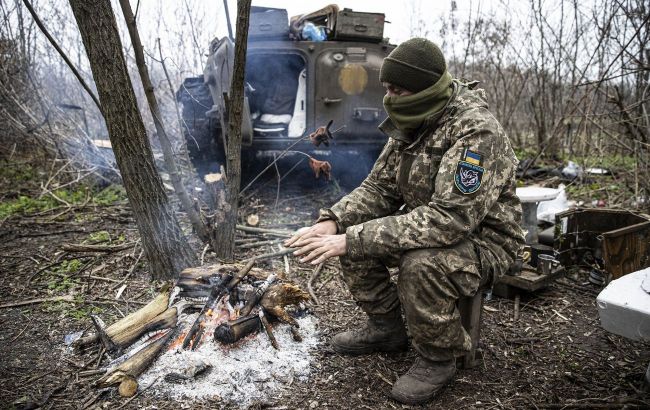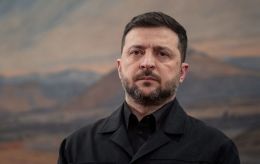Why Russia focused on Lyman direction and planning to send 80 thous troops to Chasiv Yar - Expert's opinion
 Ukrainian military in the east of the country (Photo: Getty Images)
Ukrainian military in the east of the country (Photo: Getty Images)
Ukrainian military report a shift in the enemy's focus from Kupiansk to Lyman, as well as the concentration of an 80,000-strong group near Bakhmut. Meanwhile, there is a change in the enemy's tactics in Avdiivka - instead of infantry assaults, the city is literally bombarded with airstrikes.
Olexandr Musiienko, the Head of the Сenter of Military Law Researches, shared insights with RBC-Ukraine.
On the change in the enemy's focus from Kupiansk to Lyman
In eastern Ukraine, there is a noted shift in the enemy's focus from Kupiansk to Lyman. There is no particular plan here; the enemy is trying to find weak points in our defense, as they perceive them, and exploit them. Since the calculation that weather conditions may change, allowing for effective action in the Kupiansk direction did not work, and the well-planned defense on this front allowed Ukrainian units to repel numerous attacks.
This forces the Russians to seek alternatives. Currently, as predicted, they have shifted the focus to the Lyman, Avdiivka, and Maryinka directions.
However, there are reasons to believe that at the end of January or the beginning of February, there may be a resumption of the offensive on Kupiansk when the ground freezes. Ukrainian forces are preparing quite powerfully. Another point is where they will get the troops. Perhaps by transferring units from other directions. Despite the reduction in attacks, Russian military activity is still observed.
The resumption of offensive actions is not excluded. But again, no matter how often the weather factor did not work, and despite favorable weather conditions, they did not succeed. Moreover, one of the reasons for some slowdown in the Bakhmut direction is related to the weather. It is inaccurate to say that weather conditions give them speed and momentum. But the fact that they may be preparing for an offensive is indeed the case.
On the situation near Bakhmut, Avdiivka, and Maryinka
The enemy has concentrated a group of 80,000 people near Bakhmut. But I'm afraid I have to disagree that they will be thrown into Chasiv Yar. The most significant efforts will be in the directions of Avdiivka, Maryinka, and Lyman-Kupiansk. Even the statistics on the number of shelling and clashes show this. I think the enemy will attack in the Bakhmut direction, but they will surely not throw all their forces.
At the same time, Avdiivka is being bombarded with airstrikes. In the first two weeks of 2024, there were 250 strikes, although, for the entire previous year, there were about 150. They feel they have an advantage in the air, so they use aviation.
But I would pay attention to the effectiveness of the strikes. Considering the announced figures, our group should have retreated long ago. This means that our forces have fortified positions, and there are places to hide from these strikes. FPV drones and Lancets are more significant threats, not just aviation.
As for Maryinka, there are currently two scenarios. The first is that the enemy will try to go to Kurahove. But I wonder if it is a risky move since their supply lines will stretch, and our forces can block them.
The likely scenario is to advance to the east of Vuhledar, as is happening now in Novomykhailivka, and connect with the group in Maryinka. Perhaps they will proceed with the tactics of small ticks, as they previously advanced under Bakhmut and now under Avdiivka, trying to create an encirclement.
On the left bank of the Kherson region
As far as I know, our forces are not advancing there. We are occupied with holding the positions in Krynyky and other places, inflicting maximum damage to the enemy using the available means.
Of course, the goal is to expand the bridgehead and create prospects for further advancement. But to do this, favorable conditions must arise for heavy equipment and more extensive fire support to be involved. Only then can we talk about possible further advancement."

